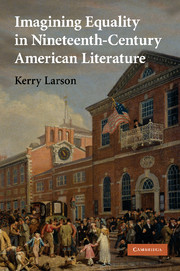PART II - THE MANY IN THE ONE
Published online by Cambridge University Press: 04 May 2010
Summary
One point of departure for many of the analyses in the second volume of Tocqueville's Democracy in America concerns the way in which equality alters the relationship between part and whole. The “nearly equal, roughly similar citizens of democracy,” precisely because they regard each other as nearly equal and roughly similar, inevitably come to see themselves as more or less interchangeable on many different dimensions. Thus “in democratic societies, where all men are very small and very much alike, each man, as he looks at himself, sees his fellows at the same time.” Within every part may be discerned the whole; within the one may be seen the many. There is of course nothing mystical about democracy's power to facilitate this instant connection. It seems to follow almost trivially from the standard idea that equality places people side by side, revealing a common tie.
As we might expect, Tocqueville teases out the importance of this development by painting a vivid, highly simplified picture of the opposite condition. In aristocratic times, he suggests, “each man was conscious of only another man, whom he was bound to obey. Through that personage he was linked, without realizing it, to all the rest.” Though it may be true that “aristocracy links everybody, from peasant to king, in one long chain,” without a special effort of the imagination neither is necessarily aware of this fact. A dim and furtive abstraction, a “general conception of human fellowship” does not come naturally to the aristocratic subject.
- Type
- Chapter
- Information
- Publisher: Cambridge University PressPrint publication year: 2008

